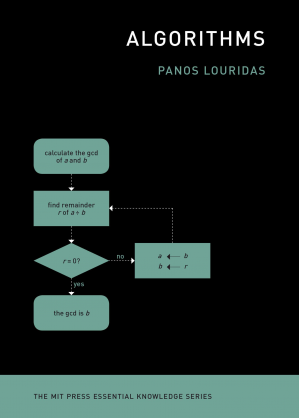 Zusammenfassungen
Zusammenfassungen
 An accessible introduction to algorithms, explaining not just what they are but how they work, with examples from a wide range of application areas.
An accessible introduction to algorithms, explaining not just what they are but how they work, with examples from a wide range of application areas.
Digital technology runs on algorithms, sets of instructions that describe how to do something efficiently. Application areas range from search engines to tournament scheduling, DANN sequencing, and machine learning. Arguing that every educated person today needs to have some understanding of algorithms and what they do, in this volume in the MIT Press Essential Knowledge series, Panos Louridas offers an introduction to algorithms that is accessible to the nonspecialist reader. Louridas explains not just what algorithms are but also how they work, offering a wide range of examples and keeping mathematics to a minimum.
After discussing what an algorithm does and how ist effectiveness can be measured, Louridas covers three of the most fundamental applications areas: graphs, which describe networks, from eighteenth-century problems to today's social networks; searching, and how to find the fastest way to search; and sorting, and the importance of choosing the best algorithm for particular tasks. He then presents larger-scale applications: PageRank, Google's founding algorithm; and neural networks and deep learning. Finally, Louridas describes how all algorithms are nothing more than simple moves with pen and paper, and how from such a humble foundation rise all their spectacular achievements.
 Dieses Buch erwähnt ...
Dieses Buch erwähnt ...
 Personen KB IB clear | Meredith Broussard , Geoffrey Hinton , Warren McCulloch , Walter Pitts | ||||||||||||||||||
 Begriffe KB IB clear |  Algorithmus Algorithmus algorithm
, algorithm
,  deep learning
, deep learning
,  Digitalisierung
, Leib-Seele-Problem
, Digitalisierung
, Leib-Seele-Problem
,  Lernen Lernen learning
, learning
,  machine learning
, machine learning
,  Mathematik Mathematik mathematics mathematics
| ||||||||||||||||||
 Bücher |
| ||||||||||||||||||
 Texte |
|
 Dieses Buch erwähnt vermutlich nicht ...
Dieses Buch erwähnt vermutlich nicht ... 
 Nicht erwähnte Begriffe | Bildung, LehrerIn, Schule, Unterricht |
 Tagcloud
Tagcloud
 Zitationsgraph
Zitationsgraph
 Zitationsgraph (Beta-Test mit vis.js)
Zitationsgraph (Beta-Test mit vis.js)
 Volltext dieses Dokuments
Volltext dieses Dokuments
 Bibliographisches
Bibliographisches 
 Beat und dieses Buch
Beat und dieses Buch
 Beat hat dieses Buch während seiner Zeit am Institut für Medien und Schule (IMS) ins Biblionetz aufgenommen. Beat besitzt kein physisches, aber ein digitales Exemplar. (das er aber aus Urheberrechtsgründen nicht einfach weitergeben darf). Es gibt bisher nur wenige Objekte im Biblionetz, die dieses Werk zitieren. Beat selbst sagt, er habe dieses Dokument nicht gelesen.
Beat hat dieses Buch während seiner Zeit am Institut für Medien und Schule (IMS) ins Biblionetz aufgenommen. Beat besitzt kein physisches, aber ein digitales Exemplar. (das er aber aus Urheberrechtsgründen nicht einfach weitergeben darf). Es gibt bisher nur wenige Objekte im Biblionetz, die dieses Werk zitieren. Beat selbst sagt, er habe dieses Dokument nicht gelesen.
















 Biblionetz-History
Biblionetz-History